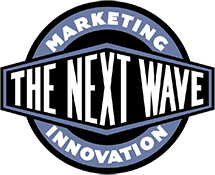
Photo of Free Stamp sculpture in Cleveland Ohio
We have a book called “Words that Sell” and one of the best is the word “Free.”
The obvious question is how are you supposed to make money by giving things away? It all depends on what you are getting in return.
Getting attention is the wrong reason to give things away for free, although it’s unfortunately, the reason most businesses use it. They feel that the only way to get attention or to compete in a crowded marketplace is to give people an offer they can’t refuse. Unfortunately, this is the fastest way to going out of business too.
Sampling is often a code word for free. This is the hail Mary pass for marketers- thinking that if people only try my product once, they’ll be convinced that we have the better mousetrap. And while sampling can work great in-store for impulse type purchases (think the little lady’s in a grocery store offering you food to try)- the problem is that on your return visit- you may not have the prompt without them handing you a taste right there in the aisle. I’ve got a whole collection of razor handles- that came as a demo, but, my ability to find and justify the prices of the blades once in the store stops me from becoming a mach 6 regular.
The real benefit of “Free” comes when the customer thinks they are getting something for free- a service, an opportunity to win etc. without realizing they are in fact giving the marketer something back. These days- the most valuable asset a marketer can hold is a list of real, verifiable, valid potential customers with qualifying data. This is where “free” becomes a marketers best friend.
The perfect example of the power of “Free” as a business model is Google. Google provides a whole suite of “Free” tools to make your life easier- and what you give them in return is more valuable by far than the search results, e-mail service or software- you give them information about you, your buying habits and a fairly complete profile that only gets better with time.
Google knows what you want- and then sells access to you to advertisers in the forms of sponsored ads that are amazingly similar to what you are searching for. You write an e-mail to your friend about a yoga class- and there, next to your gmail message- are ads for yoga books, videos, mats etc. It’s non-intrusive and relevant if you want to take the bait.
Even if you aren’t Google sized, you can use the power of free to finely tune your brand messaging. With media becoming ever more fragmented and more expensive- making sure you are getting your message directly to people most likely to need your product or service can be the difference between making or breaking your advertising budget.
Working with a local orthodontist, we know that our market is parents of kids aged 8-16 and the kids themselves- that may need braces. It doesn’t do us much good to reach people without kids (or seniors who take their teeth out at night)- so by offering a contest to “Win free braces” we create an opportunity to build a database of potential customers so that we can focus our marketing dollars on only those with crooked teeth. In exchange for “Free” we’ve gained something extremely valuable to our small market client.
Another tool was to give away free mouth guard fittings for school aged athletes. You know the ones you boil in water and then press in place. The ones that almost never fit quite right. By buying the mouth pieces in bulk- and providing a branded case for the mouthpiece, we keep our brand in front of a group of influencers in our target market: jocks in junior high and high school.
Besides the acquisition of data, true free offers often generate buzz marketing- where consumers tell each other about the amazing offer. It’s absolutely mandatory that when the consumer follows through- they get what they were expecting. Chick-fil-a and Coke teamed up to offer a free sandwich with an online promotion- but, when I went into a Chick-fil-a to redeem the offer, I was told that they were a “remote store” and the coupon was only available in stores where they make the sandwiches. Needless to say- I’ve not been inclined to go to a Chick-fil-a ever again.
Many marketers confuse discounts with free by offering things like buy one get one (BOGO) offers- or other offers that really aren’t free- but just a price cut. Don’t make this mistake. Free must mean free- at least if you want the maximum number of leads for your business.
Of course, this is free advice, so you can take it or leave it, but, if you are interested in maximizing the effectiveness of your marketing/advertising dollar, never underestimate the power of free. Just make sure you are getting something valuable back from your free offer without the consumer knowing it.
